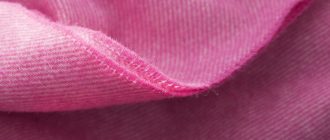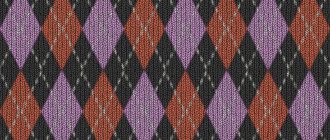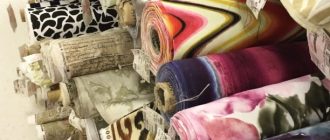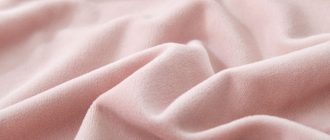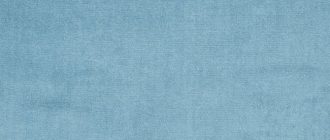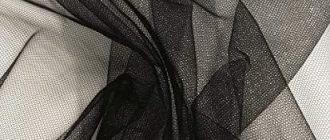Spandex Fabric For Clothing
If you’re interested in buying your first pair of designer jeans, you may be wondering what spandex fabric is. This article will explain what spandex is and the benefits and drawbacks of using this material. Whether for fashion or athletic wear, it’s a popular fabric for sports and fitness clothing.
You can also use this fabric in sports equipment such as basketballs and footballs. This fabric is able to move and stretch without tearing, and scientists have developed a range of valuable properties for it.
What is spandex fabric?
What is spandex fabric? This fabric is a type of synthetic fiber. The components of this fabric are made in the lab, and then combined under specific stimuli. Several different methods for producing spandex fabric include reaction spinning, melt extrusion, and solution wet or dry spinning. The end result is a fabric that can stretch several times its original length. However, there are some disadvantages to spandex fabric.
The ratio of spandex to other materials used in clothing is meager. Men’s clothing often contains no spandex, but women’s clothes often contain this fabric in high amounts. This is because women’s clothing needs to fit more closely, and the material is costly. In order to reduce the gloss, other fibers are added to the fabric. Usually, spandex is mixed with other fabrics for durability and comfort.
Spandex fabric is famous for its elastic properties. Its elastic properties are proportional to its percentage of stretch. Without this feature, spandex would feel like a sticky rubber band. However, it’s important to note that this fabric is a synthetic resource and, therefore, is expensive compared to polyester and nylon fabrics. Organic fabrics are often more expensive than spandex, but they have many benefits.
What is spandex made of?

The first question you might have is, “What is spandex made of?” This versatile material is composed of two types of prepolymers. Macroglycol is the flexible type. Diisocyanate is stiff. Macroglycol is derived from polyester, and it can also be a polyether or a polycaprolactone. The first type of polymer, polyethylene, has hydroxyl groups on both ends. Polyethylene has the ability to stretch, and diisocyanate is rigid and provides the fiber with strength.
Polyurethane, the base material of spandex, was invented in 1937 by the German company IG Farben. After the war, hundreds of top German scientists migrated to the United States, and many of them became textile engineers at the DuPont Corporation. The DuPont Corporation was the undisputed leader in synthetic textile development during the 1940s. By the 1970s, women’s clothing had gotten a whole new level of comfort and support.
The first step in producing spandex is manufacturing it. This material is often produced by spinning cotton into a thread and delivering it to textile manufacturers worldwide. These manufacturers then weave the thread with other materials and dye the finished fabric. Since spandex is petroleum-based, it uses a lot of energy and takes a toll on the environment. However, new materials are emerging in the textile industry that is made from non-renewable fossil fuels.
The benefits of using spandex fabric
There are many benefits of using spandex fabric in your garments. For one, this material does not fade or shrink, and you can wash and dry it with almost any detergent. Additionally, it is resistant to seawater, perspiration, and many dry cleaners. However, there are some disadvantages associated with this fabric, and it’s best to avoid them if you can.
The main benefits of using spandex in your clothes are flexibility, elasticity, and durability. It is also lightweight, breathable, and wrinkle-resistant. And, because it’s a blend of different fibers, it’s easy to maintain. Besides being easy to care for, spandex is also durable, preventing damage from body oils. It is also usually used in sports apparel. Finally, it is a common material used in motion capture suits, making it easier to generate realistic 3D characters.
Another benefit of spandex is that it offers excellent stretch. In fact, it can be stretched up to seven times its original length, and it returns to its original position when tension is released. Other benefits of this material include a good range of motion, a close shape fit, and excellent shape retention. With all these benefits, it’s easy to see why people like wearing this material. So, what are the benefits of wearing spandex fabric?
The cons of using spandex fabric
While the pros of using spandex in your clothing are numerous, you should be aware of the cons before using this type of material. First and foremost, spandex is very stretchy. Its main component, polyurethane, is as stretchy as rubber. It can stretch by up to 700 percent before returning to its original shape, perfect for sportswear. Additionally, spandex fabrics are durable, as their smooth rubber-like texture prevents pilling and nodules from appearing.
One major con of spandex is its environmental impact. This synthetic material is not biodegradable. Most spandex fibers are not organic or non-GMO. They are also too small to be captured by sewage treatment facilities and end up in waterways, lakes, and oceans. Because of this, it is often difficult to recycle spandex fabrics after they have been worn out. However, if you are looking for clothing that is both comfortable and affordable, consider using a garment made of organic cotton.
Other than sportswear, spandex is used in industrial applications as well. This material is usually used for clothes that need to fit tight and stretchy without compromising comfort and mobility. However, it is sometimes used in industrial settings, such as motion capture suits used in the film industry for realistic 3D character animation. If you’re wondering whether or not spandex is suitable for you, you should find out.
History of spandex fabric
The history of spandex fabric starts with the development of the first fibers to manufacture women’s girdles. The girdles were made of rubber, and the women wanted something with a softer feel. The company decided to produce spandex fibers and began experimenting with their applications. The results led to the development of a fabric that is now a staple in the fashion industry.
The first synthetic rubbers were created during World War II, which led to the development of spandex fabric. In the early 1950s, a German company called Bayer developed the first synthetic polyurethane elastomer. The company earned the copyright to manufacture this material in Germany, and later Du Pont and the U.S. Rubber Company developed the final version, known as Lycra. This material was patented in 1952, and today Du Pont is the leading manufacturer of spandex.
Today, spandex is a fully synthetic fabric made from various components. The fabric’s constituent parts are synthesized in the laboratory and combined under particular stimuli. There are a number of methods used in manufacturing spandex, including melt extrusion and reaction spinning. The last two methods are used to make a high elasticity fabric resistant to a wide range of temperatures. In addition to sportswear, this fabric is also used in clothing and home textiles.
How to care for and clean spandex fabric?
Knowing how to care for and clean spandex fabric can keep your garments looking like new for years to come. Using a mild, alkaline powder like baking soda mixed with water will raise the pH level of your laundry. Baking soda is a natural antiseptic that discourages odor-causing bacteria. Unlike harsh detergents, baking soda won’t damage spandex fabric. It has antibacterial and pH-balancing properties that will prevent odor-causing bacteria from growing. If you’re worried that baking soda will damage your garments, try washing them in a separate laundry bag.
When washing spandex clothing, always remember to use polyester thread, as it gives a little bit and allows the fabric to stretch while still maintaining its shape. When sewing, use a ballpoint needle as straight pins can leave permanent holes in the fabric. If you’re sewing with spandex, use a stretch stitch or a narrow zig-zag stitch to prevent snagging.
You can wash your spandex lingerie garments in a washing machine or drying rack. Be sure to use cool water when washing, as hot water can ruin the structure of the fabric. Ensure that you rinse your garments thoroughly and use a mild detergent that doesn’t contain chlorine. Once you’ve rinsed your garment, gently squeeze out the excess water and hang it on a mesh laundry rack to dry.
FAQ
Main spandex fabric colors
- purple
- yellow
- green
- black
- red
- white
- pink
- grey
- blue
Main spandex fabric brands
- Ambesonne
- Robert Kaufman
- APC Fabrics
- Spoonflower
- Lunarable
- ben textiles inc.
- Fabric Merchants
- Cotton + Steel
- eLuxurySupply
- Sophia-Art
- TELIO
- SanVera17
- Michael Miller
